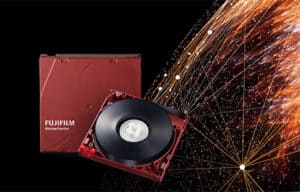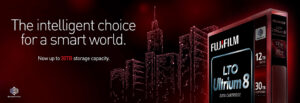Reading Time: 4 minutes Storytelling is a central facet of society that may have changed formats over the years but will never become obsolete. In today’s digital world, broadcasters and television networks focus on creating relatable stories to connect with their audiences, and they can’t do that without a wealth of readily available content.
Storytelling is a central facet of society that may have changed formats over the years but will never become obsolete. In today’s digital world, broadcasters and television networks focus on creating relatable stories to connect with their audiences, and they can’t do that without a wealth of readily available content.
MLB Network is the source for baseball stories of all kinds, from live games to studio shows and feature programming. Launched on January 1st, 2009, MLB Network is growing fast, reaching more than 70 million households today, delivering the best of America’s national pastime, all the time.
The Challenge: Digital Content Storage and Management
“MLB Network’s goal is to bring baseball to our audience every night with the highest levels of production quality, focus and enthusiasm throughout the year,” said Tab Butler, Director of Post Production and Media Management at MLB Network. “To accomplish this, we need constant access to our archives and current live game content. We need all information from every game securely stored and easily accessible.”
With multiple recordings of every game, along with multiple audio sources, and pregame, post-game and isolated camera feeds, it is not uncommon for MLB Network to record more than 3,000 hours of content per week. That content is then categorized and cataloged for future use, using the Emmy Award-nominated media asset management DIAMOND System. When the baseball season comes to a close, MLB Network continues to deliver baseball news 24/7, with special programming about a team, player or other happenings in the sport. These individual projects require systematic archival that supports precise selection and instant access of specific files. The challenge is how to empower diverse departments to directly access their projects, without heavy IT support.
MLB Network Deployed StrongBox for Project-Based Workflow
As an early adopter, MLB Network deployed a custom-developed StrongBox to manage archived projects in late 2011. StrongBox is a vendor-neutral, fully portable data vault for long-term file retention. Functioning as standard network-attached storage (NAS), StrongBox employs Linear Tape File System (LTFS) media as the principal storage medium to save money and empower a file-system view of all archived content. An internal disk cache enables rapid file access. With drag-and-drop functionality, StrongBox makes accessing archived projects easy for MLB Network, delivering content on-demand to multiple, simultaneous users. Since MLB network is a 24/7 operation, the production staff uses a SAN-based Final Cut Pro (FCP) platform to develop programming that is updated throughout the season with the latest information. When these projects are ready for archival, the video, audio and revision files, along with their metadata, are stored in StrongBox. Having the ability to recall an archived show, and repackage it with current information, utilizing tape as the storage medium, reduces the storage costs for the archived content. “StrongBox has been natural for streamlining this type of project-based storage. Instead of keeping projects on spinning disk, we’re able to offload to StrongBox,” explained Butler. One of Butler’s key initiatives is finding ways to better automate the media management environment, allowing different departments to manage their own archival data instead of relying on his Media Management team to store and retrieve files. With StrongBox, editors have direct access to archived projects in real-time, without having to depend on a Media Management operator to retrieve files.
High-Capacity, Low-Cost LTFS Tape for Proxy
Butler said that for the 2009 baseball season, 25 terabytes of spinning disk storage was required for the video proxy data, and for the 2010 baseball season, 32 terabytes was required. Although this proxy information requires long-term storage, it is accessed very infrequently. Thus, the operational costs for keeping this much data on spinning disk become extremely expensive. Even though it is long-tail content, it cannot be taken offline.
Through the custom-built, DIAMOND System, MLB Network logs and categorizes HD recording by viewing the video using proxy video files, which are recorded in real time. The bulk of recorded HD Video content is stored within an LTO library, and is searched and accessed using DIAMOND and the Grass Valley Aurora systems. Thus, Butler is investigating ways to use tape to further drive down the costs of his long-tail proxy content which is currently on spinning disk.
“If I look down my future roadmap, my proxy environment is going to continue to grow year over year for the lifetime of the archive,” explained Butler. “Getting the proxy on LTO-5 media is much more cost-efficient for long-tail content.” With the introduction of LTFS, tape can be partitioned and indexed on a file level. This brings significant opportunity for media and broadcast companies. For MLB Network, LTFS brings the capability to efficiently maintain an accessible archive at the file level, while eliminating the heat generation, cooling requirements, spinning drives and other operational costs associated with disk storage.
“StrongBox is a very unique product, with flexibility that makes it functional in multiple use-cases for MLB Network,” Butler continued. Currently, the MLB Network video archive consists of 10 to 12 petabytes of stored HD content, and 275 terabytes of proxy content. A migration of that much data would be a significant undertaking. With the ability to scale up to 35 petabytes, StrongBox delivers low-cost, high-capacity storage with high-performance access that could provide a cornerstone in the foundation for MLB Network’s biggest business asset – its programming.
The Bottom Line
MLB Network delivers exciting, engaging baseball stories 24/7, 365 days a year. With a massive content archive that will only continue to grow, Tab Butler knows that LTFS tape is a cost-efficient and scalable way to manage MLB Network’s digital records. While editors constantly juggle multiple projects with demanding deadlines, StrongBox facilitates a project-based workflow, integrating with the editing environment to allow end users more direct access to their archived content. Ultimately, StrongBox helps MLB Network spend more time creating and delivering award-winning baseball stories and less time worrying about how to manage data.
MEET THE FASTEST LTFS NAS

 LTO tape is an ideal solution for M&E companies. LTO is an open format designed for interoperability and together with LTFS, provides easy data access and management—perfect for easy file share, high performance, and improved workflow.
LTO tape is an ideal solution for M&E companies. LTO is an open format designed for interoperability and together with LTFS, provides easy data access and management—perfect for easy file share, high performance, and improved workflow.








 Storytelling is a central facet of society that may have changed formats over the years but will never become obsolete. In today’s digital world, broadcasters and television networks focus on creating relatable stories to connect with their audiences, and they can’t do that without a wealth of readily available content.
Storytelling is a central facet of society that may have changed formats over the years but will never become obsolete. In today’s digital world, broadcasters and television networks focus on creating relatable stories to connect with their audiences, and they can’t do that without a wealth of readily available content.